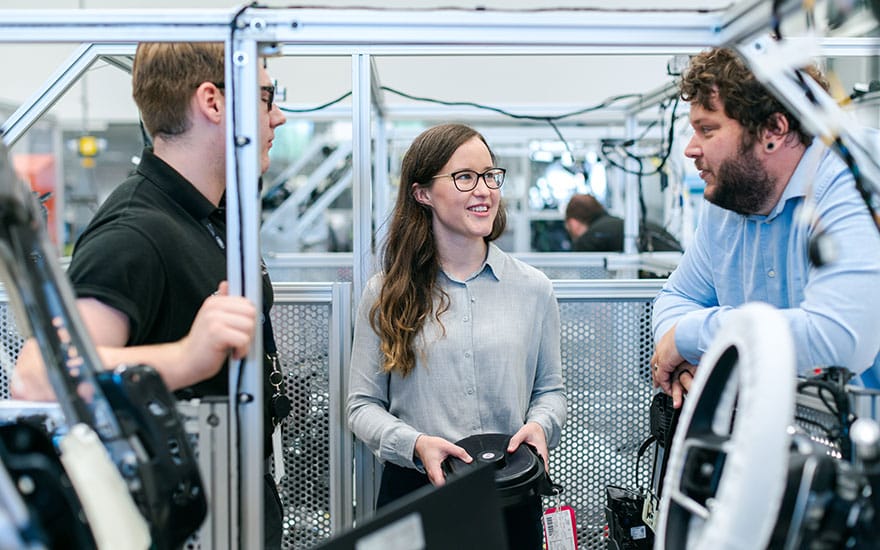Workforce Planning
Embrace agile forecasting and design equitable career pathways

You know that workforce planning—and developing successful employees—are key elements of smart corporate strategy. Do you know the latest thinking about how to help employees succeed in our rapidly changing economy?
When mapping out future workforce needs, actively chart equitable career pathways for all employees—from those on the front line to senior leaders.
1. What You Can Do

Impact Employers take a strategic approach to preparing workers to adapt to—and succeed in—our ever-evolving economy. Regularly assess your future skill needs and design employee training programs to increase the flexibility of your workforce.
Foresight and Analysis: Regularly assess your future workforce needs, including the skills, experience, and credentials you’ll require.
- Promote and provide continuous learning and skill development opportunities at all levels of the organization (general upskilling).
- Cross-train employees, especially frontline and entry-level employees, on skills needed for multiple roles to increase the flexibility of your workforce and improve workers’ prospects for long-term employment.
- Anticipate when new technology will be implemented and provide robust training for employees who will use it.
- Design performance evaluations to reward employees for developing new skills aligned with the company’s future needs (general upskilling).
- Provide soon-to-be offboarded employees with training—or subsidies for third-party training—in marketable skills (outskilling—see also Offboarding lever).
2. What You’ll Gain

Impact Employers invest in employee learning, development, and internal promotions, reaping higher ROI, increases in productivity, and lower rates of turnover.
Quick Stats
- Reskilling, or training employees to master skills a company will need moving forward, produces a return on investment that is 1.5 times higher in the long run than outside hiring.
- McKinsey found that, on average, replacing an employee can cost 20% to 30% of an annual salary, while reskilling costs less than 10%.
- Continuous learning and training for employee development has been shown to reduce turnover and increase productivity.

Learn From Successful Changemakers
Sean Mullan at 3M explains how the company works with local schools and colleges to attract tech-focused students to careers in modern manufacturing.
Corporate Culture
Build a purpose-driven, employee-centric workplace
Learn MoreTalent Acquisition
Build diverse talent pipelines and embrace unbiased hiring
Learn MoreTalent Development
Offer skill-building opportunities to help employees, and your company, advance
Learn MoreTotal Rewards
Offer holistic benefits that promote employee stability and well-being
Learn MoreOffboarding
Offer strategic, future-focused supports for existing employees
Learn MoreImpact Employer Model
Prepare your company for the future of work by putting talent first
Learn More